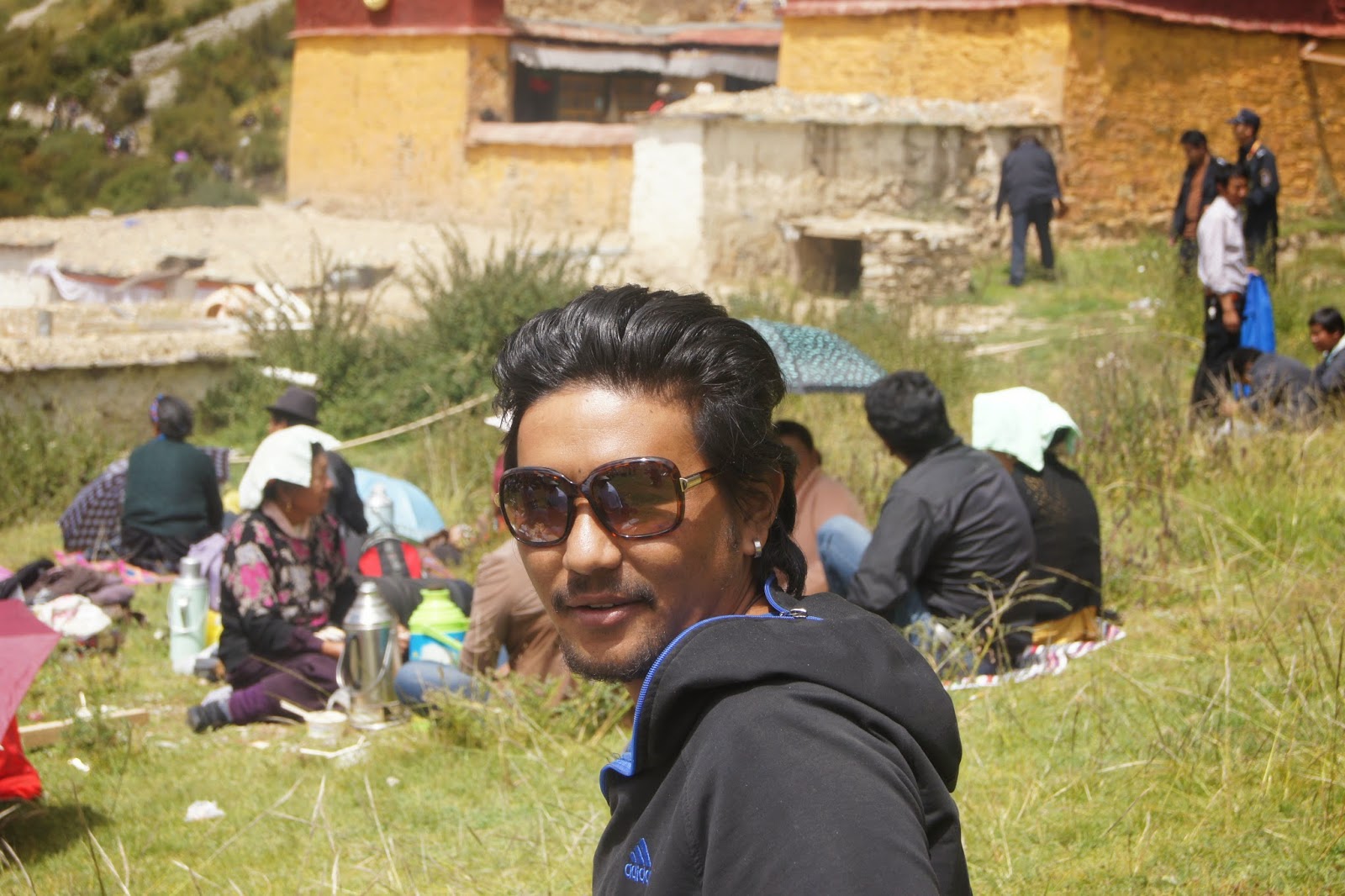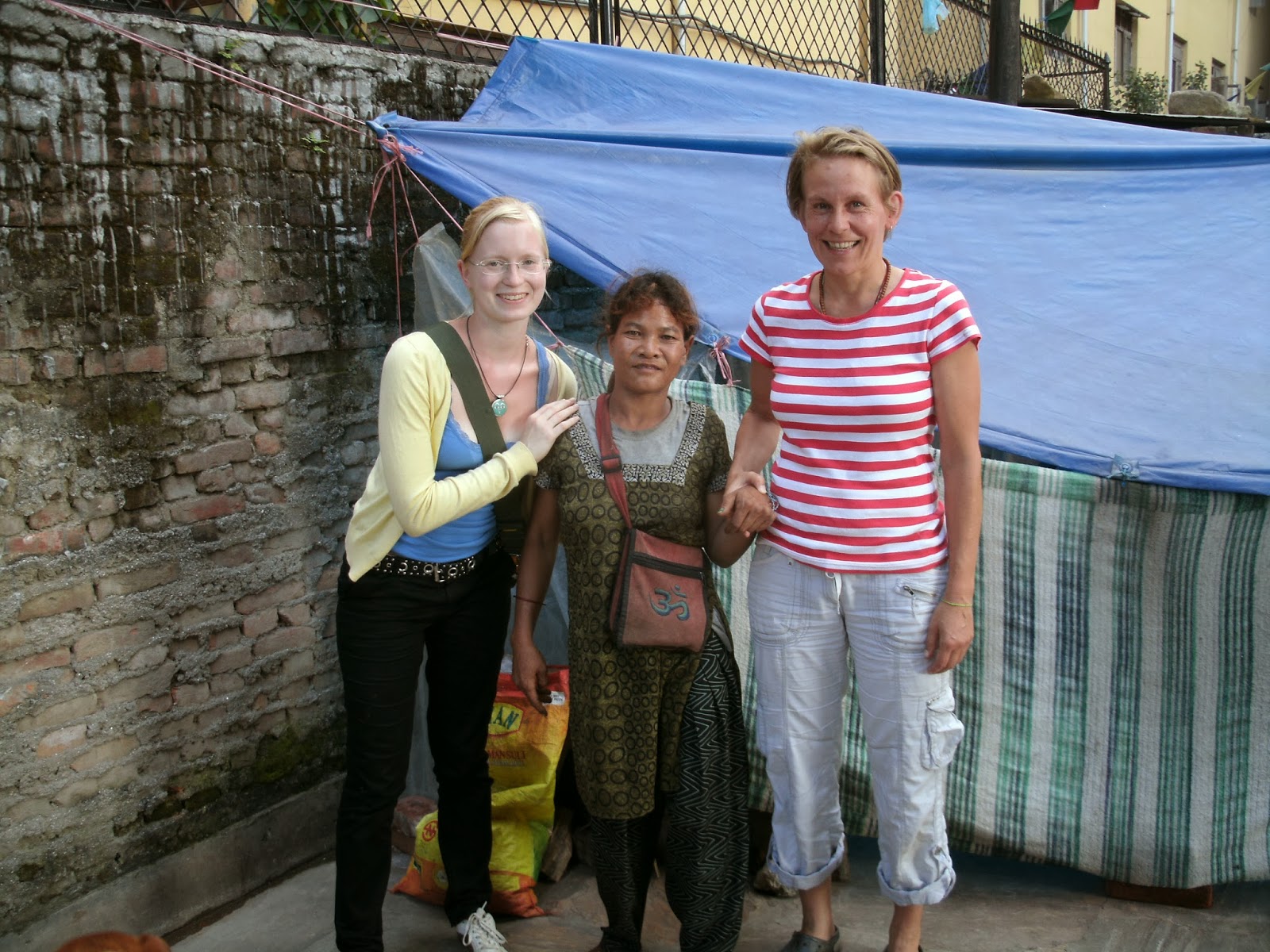The Lonely Mango or ‘How to share a terrace with three dogs, cockroaches, ants and other little critters and experience Boudha with eyes and ear, nose and mind.’ August 2014. Close to Boudha, on a roof, a 5th floor, between monasteries, views, a panoramic view, the Kathmandu valley view. Green hills, grey sky, green-grey, lead-grey, silver-grey, black-grey, dark blue-grey. Light blue holes within the clouds allow a moment to realize infinity. It is the rainy season. The scent of sandalwood, cinnamon, patchouli, cloves and undefined herbs, drifting smoke, deep-fried pastries, vegetable fried rice mixed with the odour of urine and burning trash are passing my sense of smell. Peals of bells, garlings, couch shell trumpets and drumming noises swirl through the air, adding to the chanting of monks and nuns. Birds are screaming, babies crying, dogs barking. One neighbour’s water pipe is running and running and running....The bladder is calling. It’s five o’clock in the
Posts
Showing posts from 2014
Great Holiday
- Get link
- Other Apps
By
Student Services
-

Being back in Lhasa for summer holidays after one year’s study outside the country was very different. I worked as tour guide during this summer holiday just as I did before when I was in Tibet. The good thing is that the holiday was very joyful and meaningful. Thinking about what the cause is for that joyful period, I came to realize that it is the dharma classes I am taking at Rangjung Yeshe Institute. Dharma Studies made me look a lot like an authentic Tibetan and made me a busy tour guide this summer. Being a tour guide in Tibet requires a lot of experiences and information on Tibetan history, culture, politics, geography, and so on. On top of that, it is never enough to provide the tourists with explanation on Buddhism since Buddhism plays the key role in Tibet and most tourist attractions are monasteries. The explanation within one particular monastery differs from guide to guide. Some focus more on history, some more on culture. However, the ideal service is t
Immense Gratitude
- Get link
- Other Apps
By
Student Services
-

I first visited Rangjung Yeshe Institute in 2010. Immediately upon witnessing people engage with, practice, and study the dharma in such an intensive way, I felt the wish to be able to do the same. There were obstacles that needed to be overcome in order to make this happen, but by 2013 I made it. And now that I am here, every day I wake up and feel as if I am living in a dream. Every day I feel immense gratitude toward everyone who makes studying here at the shedra possible. I think of the Buddha and the lineage masters, and the indescribable good fortune we have of encountering the priceless wisdom of the teachings. I think of the kindness of the guru, whose love and compassion make all things possible. I think of the ordained sangha whose depth of study and practice inspire us. I think of all the westerners who traveled to faraway places and regardless of living situations, language barriers, and other hardships, remained committed to learning challenging foreign lang
Langtang Valley
- Get link
- Other Apps
By
Student Services
-

Dear friends, On my last break from school I headed to a valley in north Nepal, close to the border with Tibet, called Langtang Valley. From the beginning I knew this trek was going to be different than all my other wanders in the mountains. I won't say much about the breathtaking view in this valley, or about the peaceful, kind character of the people living in the high mountains. But I do want to tell you about the little kids living there. While traveling there I noticed that many of the young kids of the villages stay at home throughout the day, something that forced their parents to divide their time between their demanding jobs and housework and the demands of child care. I wondered what the reason was that the kids stay at home all day, every day. After some talks with the local Tibetan people I found out that there is no school in the upper part of the valley. So the kids are facing three options: attend the closest school (which is two days walking distan
Silent teachers
- Get link
- Other Apps
By
Student Services
-

Goethe once wrote: “Mountains are silent teachers that make taciturn students.” I really like this sentence, because it's so true. Mountains have something fascinating about them, and I heard so many people say that it is almost impossible to not start thinking when you see those majestic, beautiful things. That mountains seem to be floating on clouds, as if not really real and without any contact to the ground, and also both so far away and very close at the same time. To me it is no wonder that people start believing in gods or the like, just looking at mountains. I guess Nepal with all it's mountains is basically predestined to spirituality, just because of having mountains. Right now it's Friday, I'm in Bandipur, one of my favorite places in Nepal, and enjoying the view (with mountains, of course). The philosophy class was cancelled (the Khenpos are on a short retreat with Chökyi Nyima Rinpoche), but I still feel like I'm getting a little class
Chö Practice:
- Get link
- Other Apps
By
Student Services
-

In order to strengthen and stabilize Buddhism within Nepal, Chökyi Nyima Rinpoche, Chokling Rinpoche and Phakchok Rinpoche have decided to host Lamas from all over Nepal for one week at our monastery every year. The first such event took place last year in 2013. At this auspicious occasion Chokling Rinpooche was transmitting the complete empowerments and transmissions of the terma teachings of Jatsön Nyingpo, while Chökyi Nyima Rinpoche and Phakchok Rinpoche were giving teachings. On the 11 th of February 2014 after the Lamas had gathered once again to receive teachings and empowerments for one week, the event concluded with a big whole day Chö Feast. Chö, literally cutting through, is one of the Eight Practice Lineages of Tibetan Buddhism. It was founded by the yogini Machik Labdrön (1055-1149/53), who was a disciple of the Indian master Padampa Sangye. It is a practice that is said to put the Prajnaparamita teachings on transcendent wisdom into practice. While upho
THE MAGIC OF TRANSLATION
- Get link
- Other Apps
By
Student Services
-

There is the generalized belief that a translated text will never be able to capture the greatness of its original—in other words, it will always imply per se a loss of sumptuosity. The semiotician and novelist Umberto Eco [1] (1932) epitomizes this pessimistic understanding when he states that “translation is the art of failure” [2] . Taking into the account this gloomy premise, I wanted to explore some of the features associated with the process of translation which might have captivated people since the very invention of written literature [3] . To start with, we should examine the assumption of the implicit loss of richness in translation in order to ascertain either it is appropriate or not. Linguists have articulated different paradigms of translation. Nevertheless, one of the most fascinating is the theory that Walter Benjamin [4] (1892-1940) formulates in his The Task of the Translator [5] . Simplistically speaking, Benjamin undermines the previous pessimist
Kapilavastu
- Get link
- Other Apps
By
Student Services
-
.jpg)
One of the best things of studying in Nepal is definitively the amount of holy sites which can be visited. As I had visitors coming to Nepal this summer, it was a great chance to visit again many of these sites, such as Swayambunath, Namo Buddha or Pharping. We also went to Lumbini, where I had been before, yet this time I also got to visit the ruins of the ancient city of Kapilavastu, where prince Siddhartha lived till, at the age of 29, decided to renounce the kingdom. What the archaeologists have identified as the ruins of Kapilavastu, the capital of the Sakya kingdom, are located around 30 kilometers to the west of Lumbini, near the present town of Tilaurakot. Thought little remains of what was the residence of the prince Siddhartha, today mostly covered by forest, perhaps the most impressive is the wall, very wide and solid, surrounding the whole town, its undulations being witness to the movements of the ground from the time it was built. Walking ins
Shedra Experience
- Get link
- Other Apps
By
Student Services
-

Last semester I took four courses namely: Uttaratantra 202, Buddhist Scripture 204, Buddhist Epistemology 303 and Philosophy 306. I like all the courses which I am attending at the current. Being able to study at RYI let me achieve the fusion of cognition and knowledge. It brings flexibility to deal with people of various countries, family backgrounds, cultures and traditions of different background. The discourses which I achieved in Shedra encourage me to strive hard for the ultimate happiness. Studying in this program has convinced me that it is the best and the most meaningful work for this life time and the all life times. Being a Tibetan woman I feel that it is very fortunate to be able to study here. Normally Tibetan women put sincere effort in earning samsaric livelihood rather then engaging in shedra study. It is very rare opportunity. I am grateful for this fortunate merit. Apparently these days many people are dying with various conditions. Sometimes they die in an
The Five Best Restaurants in Bouddha for Shedra Students
- Get link
- Other Apps
By
Student Services
-

Are you new to the Shedra? Not having much money to spend? Have to study a lot? Here comes a brief guide and recommendation to some nice places in Bouddha suitable for the average Shedra student, old time favorites and newly rising stars. Double Dorje 5. Double Dorje: A cozy small restaurant, run by a sweet old Tibetan woman. It is known to tourists and is a place visited frequently by westerners since it has been recommended by various travel guides as a nice, cozy, local restaurant. Particularly in the evening in the winter, it becomes a great place to study, since unlike the other restaurants it is completely closed and inside. Thus the place stays warm and as long as there are no power cuts the ballon lamps create a warm and home-like atmosphere. Also if you wish to spend the afternoon there, it is known for its special home-made apple pie and masala tea for a very reasonable price. For lunch and dinner two dishes became especially ch
A glittering drop on the streets of Boudha
- Get link
- Other Apps
By
Student Services
-

Nepal is certainly not a rich country regarding the material properties of the people who live here. Sometimes it is simply heartbreaking to see how many hardships people have to undergo in their daily lives while we students from the West are so fortunate to be able to choose how and where we want to live. Nevertheless, Nepal is certainly very rich regarding spirituality and it is sometimes amazing to see how strong people can be in their minds. I would like to tell you about one person who I admire for her mental strength. She is one of these persons who have nothing, not even a family to rely on, which is so important for all Nepali people. I do not even know her name because she is not able to speak properly. Walking is also difficult for her, probably due to a Polio disease in her childhood. These are really bad conditions for a person living on the street, not only in Asia. She might be about my age, maybe younger, who can estimate the age of people who live on the stre